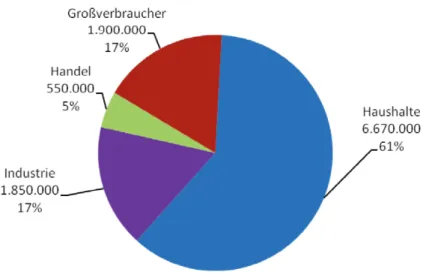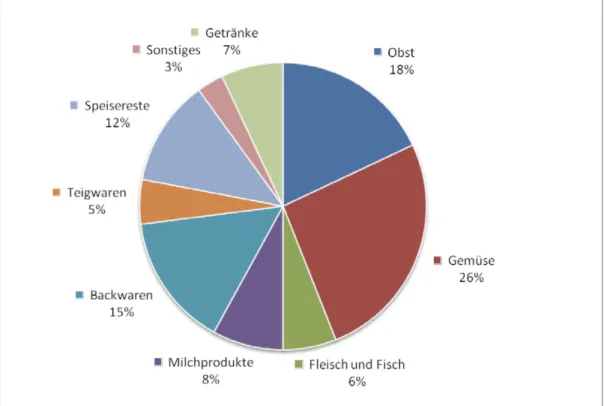This thesis examines the issue of food waste in Germany and proposes policy solutions for food waste in German households. The author analyzes the history and background of sustainability and food waste in Germany to recommend a change in policy. The author uses a literature review as the main method for investigating food waste in Germany.
This thesis will focus on the issues surrounding food waste, the factors that cause food waste and the importance of reducing food waste in Germany. Germany contributes to a large amount of food waste in the EU and strives to reduce food waste significantly. While both food loss and food waste pose significant challenges to feeding the world, this thesis will focus specifically on food waste in Germany.
Food waste has negative consequences for the environment, poses ethical problems and contributes to economic losses. The primary research question is: “What are the implications of food waste in Germany?” and the author tries to answer this question with the help of literature review.
Background of Food Ways in Germany
This is also significant in considering food waste, as food waste falls under 'waste disposal'. It is important to take a closer look at this film to better understand the beginnings of the food waste movement. Following Thurn's film, the issues of food waste began to receive attention from press releases, TV broadcasts and public events.
Furthermore, the BMELV hopes to establish more regulations and legislation that combats food waste (McCabe & Lieberz, 2013). When discussing the vitality of food waste policies, it is important to reiterate that households represent the largest share of food waste in Germany. In fact, Germany's primary focus for SDG 12 is to reduce food waste (Scholz, Keijzer, & Richerzhagen, 2016).
Even political parties in Germany are aware of food waste as a problem and are trying to tackle it. This further emphasizes that the challenge of food waste prevention is well known and widely accepted in Germany.
Methodology
To limit the amount of data, the author further filtered the sources for those published within the last five years. The author identified these themes by reviewing article titles and dates; reading article abstracts when present; and by noting key words such as prevention, policies, facts, studies, statistics, and metrics. The data were further narrowed to include information highlighting food waste in German households and presenting current and comparable studies and policies on food waste.
By concentrating on the indicator words and reducing the amount of data to a more detailed, relevant classification, the author was able to sift through and organize the results and present an articulate, unified review of food waste in German households.
Findings
Finally, consumers are not aware of the negative impacts of food waste on the environment and economy (Buchner et al., 2012). According to Kameke and Fischer's study, improper planning of food purchases is the main cause of household food waste. By limiting access to bulk food products, consumers buy smaller quantities, reducing the amount of potential food waste.
However, this does not mean that physiological feelings such as worry and guilt do not play a positive role in reducing food waste. Simply being aware of food waste is not enough to cause consumers to combat food waste. Differences in socio-economic status also affect the amount of food waste produced at the national and individual level.
A 2014 Waste and Resource Action Program (WRAP) study showed that household size plays a large factor in the amount of food waste generated. It is not surprising that the amount of food waste increases as the number of residents in a household increases. Studies show that older people produce less food waste than younger people (Lea & Worsley, 2008).
Based on the few examples given, the complexity of pinpointing the causes of food waste is evident. The amount of accumulated food waste is also influenced by the economic condition of the nation. Although efforts to halve the amount of food wasted in the EU have been extended until 2030, the EU is making consistent efforts.
The fight against food waste is also visible at national and local levels. Governments and private organizations around the world are increasingly conducting research into the amount of food waste among individuals. Research is an important factor in the fight against food waste, and it is essential that countries obtain quantitative evidence of food waste to better understand their role in the issue.
Too Good for the Bin has the potential to guide food waste legislation at EU level. As the primary food waste campaign in Germany, the success of Too Good for the Bin has been documented.

Discussion and Conclusion Recommendations
To reduce household food waste, consumers must be educated on how to prevent food waste and on the implications of food waste. Taste the Waste served as an important tool for raising consumer awareness of food waste. When the smart meter is attached to the bins, it measures and monitors the amount of food waste in the bin.
At EU level, legislative measures have been taken to reduce food waste. For example, as in Germany, many private actors in the United States have taken action to reduce food waste. The largest portion of food waste arises from household food waste, and therefore policy focuses.
Recycling, recycling, and preventing "food waste": Competing solutions for food system sustainability in the United States and France. Too good for the bin - a Federal Government initiative to avoid food waste. UK food waste - Historical changes and how amounts may be affected in the future [PDF].
